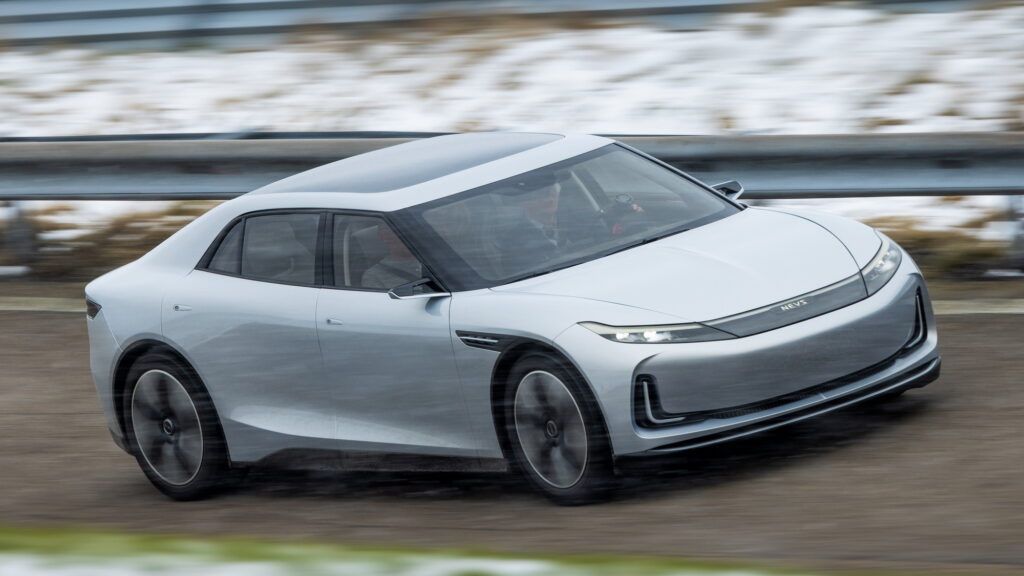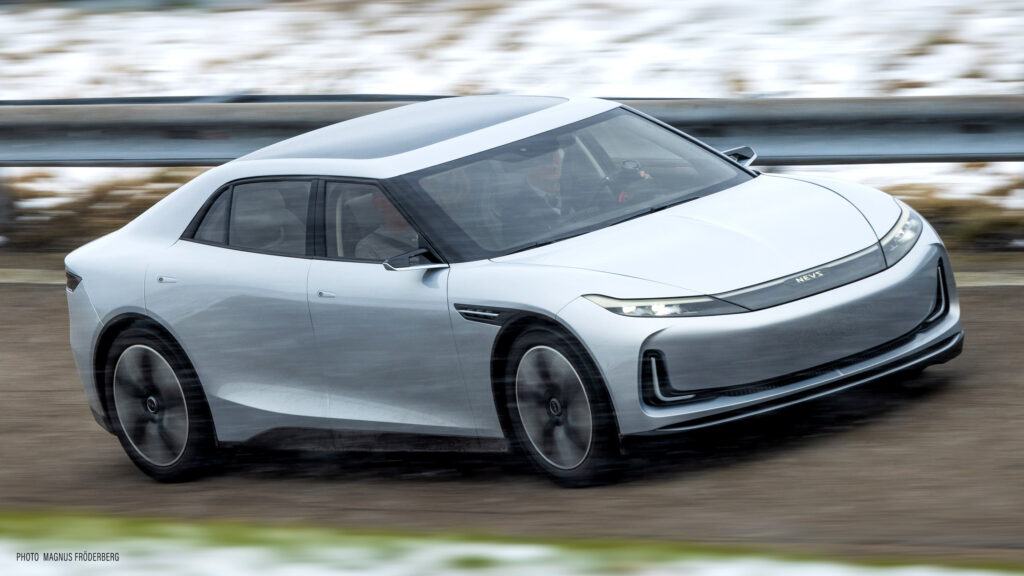While Saab went bankrupt in 2013, the brand’s legacy lived on through National Electric Vehicle Sweden (NEVS). Although the company has been quiet in recent years, it has now been revealed that it had been developing an impressive electric car. As a word of warning, you shouldn’t hold out for a happy ending, though.
Following its untimely demise, Saab Automobile’s assets were purchased by NEVS, which itself came to be owned by Chinese mega-corporation Evergrande. One of China’s biggest real-estate companies, it had big aspirations for its new automaker.
NEVS had plans for an autonomous vehicle, an electric vehicle based on the old Saab 9-3, and, as we are now learning, a brand-new EV called the Emily. All three were intended to cement NEVS‘ reputation as a high-tech mobility company.
More: NEVS Launches Sango Autonomous Vehicle As Part Of New Mobility Ecosystem
The company set up a partnership with Sweden’s local supercar manufacturer, Koenigsegg, and Evergrande bought Protean Electric, a maker of in-wheel electric motors based out of the U.K. Meanwhile, the design was to be handled by Simon Padien, Saab’s former design chief, and the pen behind the second-generation 9-5.
But it was not to be. As the pandemic raged on, it became increasingly clear that Evergrande could not support its debt, and it ran into serious financial troubles (which it continues to be embroiled in). By as early as 2021, it was exploring a sale of NEVS and its production facility in Trollhättan, Sweden. In March 2023, it was announced that NEVS would go into “hibernation mode”, resulting in the layoff of 95 percent of its workforce.
Prior to NEVS’ financial troubles, the company partnered with Plint Marketing to document the creation of the first concept/pre-production test version of the Emily. The footage remained in Plint Marketing’s possession until it was recently released to the public.
The NEVS Emily is a sedan that borrows elements from the Saab 9-5 and reinterprets them for modern times, with some design cues reminiscent of the Aston Martin Rapide. That is to say, it is a rather attractive vehicle.
Read: Saab’s Ghost Comes Back To Haunt Once Again As NEVS Goes Into “Hibernation Mode”
Thanks to its four in-hub electric motors, it had real torque vectoring that could help traction significantly, and its batteries were large enough to give it a claimed range of 589 miles (948 km) on the WLTP standard.
According to no less a source than Christian von Koenigsegg, the test car was a remarkably complete vehicle. Although it was not quite production-ready, it was close enough to hand over to Auto Motor und Sport Sverige recently for its first-ever test drive. The results are glowing, despite the car having been built in just five months.

A last-ditch effort to salvage something from the NEVS team, and to keep the spirit of Saab alive, the Emily was designed by a team of just 350 engineers and technicians. With a view to selling the car to a company that wanted a nearly-ready EV to slap its name on, the light of hope for the Emily, NEVS, and Saab’s memory, is now flickering.
As mentioned above, the cost of going into hibernation was that NEVS laid off 95 percent of its workforce. While the Emily is impressive, the team that created it has now scattered to the wind, making the car a hard sell, the company’s new CEO, Nina Selander recently told Saab Planet.
Without the team behind the car, the support of its Chinese backers, nor much else, it seems like this might really be it for Saab. With Polestar reportedly interested in buying the Trollhättan factory where the Emily project came together, this may truly be the company’s last gasp.




